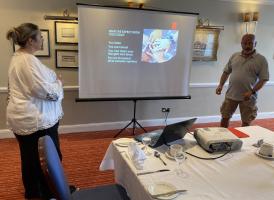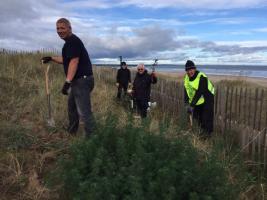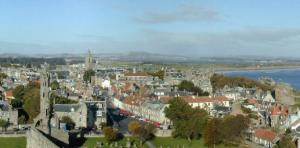Speaker Ian Black
Tue, Feb 12th 2019 at 7:00 pm - 8:30 pm
Who would have thought it?
Crail – a sleepy north east Fife village, but during the Cold War the nerve-centre where spies were trained!
Certainly most of the audience at the Club’s meeting this week found it a touch hard to believe. Until speaker for the evening, Dr Ian Black, made a very convincing case with a wealth of information accompanied by some intriguing slides.
Although his presentation was based on the history of aviation at Crail Airfield from its inception in 1918, it became clear much more was going on there. Particularly in the years from 1956 – 1960 where it was the UK’s Joint Services School for training linguists in Eastern European languages, especially Russian, who would then join the intelligence services.
Generally, this was regarded as “Crail’s Secret” until some newspapers investigated the suspicions and discovered that such as novelist and playwright Alan Bennett had in fact trained there as intelligence linguists.
However, the primary purpose of Crail Airfield was as a base for training Fleet Air Arm aircraft carrier pilots to fly Swordfish torpedo bombers, carry out attacks then land safely back on a moving ship.
Although much slower than enemy fighters, the Swordfish biplanes were highly thought of by their pilots as they had great manouverability and would not stall even at the slowest of speeds. All this made them perfect vehicles for launching torpedoes at enemy shipping.
At the beginning of World War 2 and for years afterwards some 35 Swordfish – known by their pilots as “Stringbags” - were based at Crail and carried out their torpedo practice in the Forth Estuary.
With slides Ian persuaded his audience to become part of a Swordfish attack, showing how dangerous and precarious that could be. The planes would swoop from 10,000 feet to little more than wave height and would only release their torpedoes about 200 ft from target.
Perhaps the best-known part the Stringbags played in World War 2 was their attack which crippled the major German battleship Bismarck and ended its participation in the hostilities.
In all, 123 Crail Swordfish pilots were killed either in training or in battle, and many of them are buried in Crail.
Much of the airfield’s story is told in the Crail Museum and Heritage Centre – the existence of which was also something of a surprise to the Club members.
Proposing a vote of thanks James Yule thought it was quite amazing what the Swordfish pilots could achieve and thanked Ian warmly for the time and effort he had put into such an informative presentation.
'What We Do' Main Pages:

.jpg)


